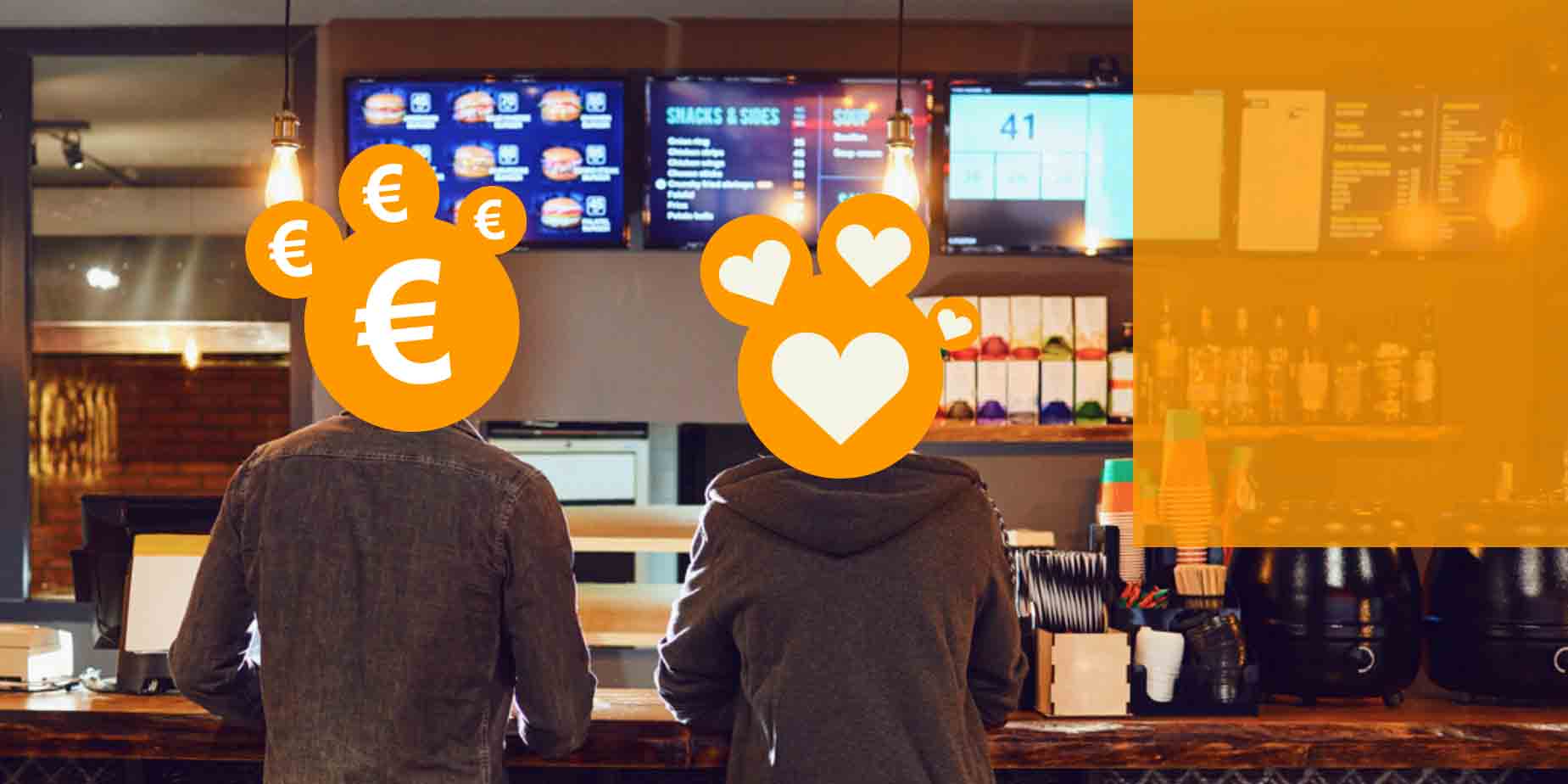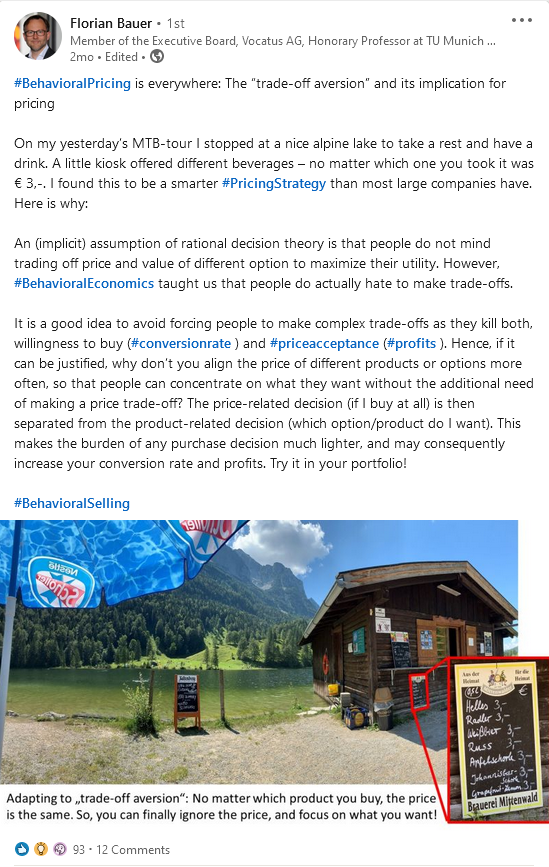Decision-making, as assumed in classic pricing theory, is not only rational but also a purely formal process of comparing price and the customer’s willingness to pay (WTP). Therefore, the decision-making process in classic pricing theory consists of three steps, only concerning the dimensions WTP and price:
- Step 1: A customer has a certain predefined willingness to pay (WTP) for a specific set of product features.
- Step 2: A company offers the desired product at a certain price.
- Step 3: The customer compares the price of the product with his predefined willingness to pay: If WTP is greater than the offered price for the product, the customer will buy it. If, however, WTP is lower than the price, the customer will not buy the product – end of process.
Hence, the logic and dynamic of the decision-making process itself in value-based pricing is assumed to be always the same and – beyond the quantitative impact of price and value offered – independent from the architecture of the offer as such.
From a behavioral pricing perspective, there are many issues with the assumption of such a “rational” price-driven decision process. Presumably, one of the most critical ones is that it completely ignores the qualitative impact any offer has on the dynamic and psycho-logic of the purchase decision itself. It is important to highlight that, beyond the core parameters of product and price, any offer has a specific architecture in respect to how it is structured. Sometimes, this architecture is straightforward (“a burger for a buck”), sometimes this architecture is a bit more complex. In any case, it is exactly this structure that influences how the purchase decision is made and what role the price plays in it.
“McPick” promotion transforms customers to “Price-McPickies”
Take the quite famous “McPick” promotion, for example. The McDonald’s promotion consisted of an offer that gave each customer the opportunity to get any two classic burgers for $5 only. This looks like just another attractive promotion that includes a certain discount (as with coupons and such).
The main idea behind these kinds of promotions seems quite reasonable at first: lowering the effective price to match the lower WTP of an additional customer group and therefore, increase the potential customer base for the period of time the promotion is launched. What this assumption misses, however, is to take a closer look at the potential qualitative effects of such an offer on current (and future!) purchase decisions.
To better understand that, we have to forget about the “McPick” promotion for a moment and answer the following question: let’s suppose someone wants to buy two burgers. Which ones would he choose? Stupid question, right? Obviously, he would go for the two burgers he likes most!
However, which burgers do you think the very same guy would pick as soon as the promotion is active? Presumably, he will change his mind – not because he internally wanted to but because the promotion changed the architecture of his decision-making process by shifting the centre of attention from personal gusto to price-performance ratio. So, now the customer will not buy the two burgers he likes most (as usual) but he will start to look at the price list in detail (maybe for the first time ever), searching for the most expansive burgers to order.
So, the promotion is not only another way of giving some discount to adapt to the lower WTP of certain customer segments. It does dramatically alter the original decision process itself. Beyond weakening price acceptance for the future, this promotion shifts decision-making attention from the product (“buy the ones you like most”) to the price (“buy the most expensive ones”), and also induces a higher price awareness. After checking the single prices, customers do not only buy different burgers for different reasons but leave the restaurant with a greater price awareness than they had before.
Whether this is good or bad depends on the pricing strategy of the company. Certainly, there are cases that positively affect the shift of decision attention away from the price and toward the product. You can find one example here. Check out Prof. Dr. Florian Bauer’s post and the discussion around it:
The point is: do not be surprised about the effects the architecture of your offer has.
Behavioral pricing and selling as a new perspective in pricing helps us to understand them better. In some cases, it might even help to prevent creating the customer behaviour that a company will complain about later on.
In fact, pricing strategies can be a self-fulfilling prophecy: If a company designs them to be prey for bargain hunters, they cannot complain about having a lot of discount- and price-focused people in their customer base at the end of the day. These companies often attract bargain hunters because they give discounts – not the other way around.
Although, there is nothing “wrong” about discounts: they are not bad per se. It is just important to better understand and adapt for the quantitative (i.e., weakening of the price acceptance) and qualitative (i.e., altering the psycho-logics of the purchase decision as described above) impacts they have. Understanding these repercussions of your pricing strategy helps you to design better offers – especially when it comes to discounting and promotions.
PS: There is more! This is just one of the examples which Prof. Dr. Florian Bauer is going to present today at the #PPSVirtual20 Pricing Conference: “Behavioral Pricing: Fun Facts or Fundamental Framework?”. Find more information about the conference for pricing experts here.
Interesting? Then, the following articles might be worth reading as well:
- Un-casting the discounting spell
- Price acceptance, not willingness to pay – a concept for better pricing
If you have any questions, please contact us directly.






